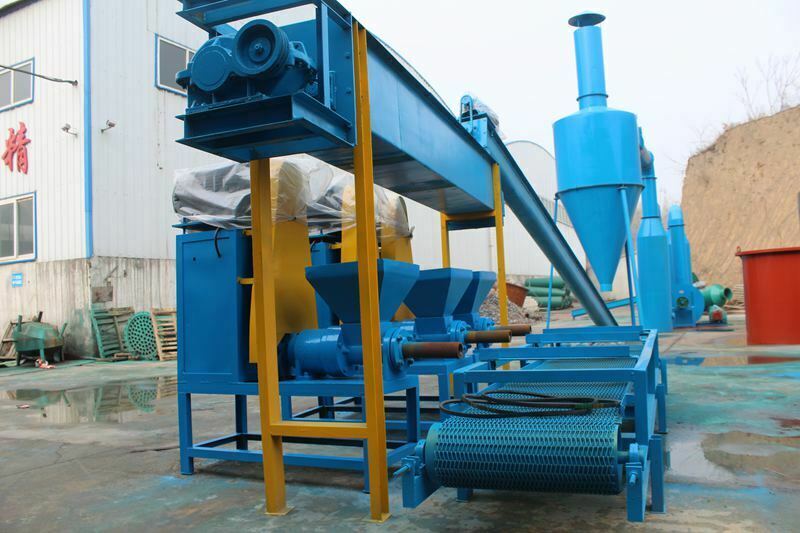먼저 수분 함량
숯은 흡수성이 높은 물질이므로 쌓는 과정에서 공기 중의 습기를 흡수하여 수분 함량이 증가합니다. 따라서 숯의 수분 함량은 자체 품질에 영향을 미치지 않지만, charcoal machine production line 고객은 경제적 가치를 높이기 위해 숯의 수분 함량을 가능한 한 낮게 유지할 것을 요구합니다. 일반적으로 새로 생산된 숯의 수분 함량은 3% 미만입니다.

두 번째, 휘발성 분획 (휘발성 함량)
휘발성 물질의 양은 탄화 온도에 따라 달라집니다. 용도에 따라 저온 또는 중온 숯을 태우거나 고온 숯을 태울 수 있습니다. 전자에 의해 고온 소성 중에 방출되는 CO, CO2, H2, CH4 및 기체 탄수화물의 휘발성 물질은 일반적으로 12-20%입니다. 고온 탄소에 의해 방출되는 상기 휘발성 물질은 적으며, 그 함량은 일반적으로 5% 미만입니다.
세 번째, 재율 (재 함량)
재는 모든 숯이 연소된 후 남는 흰색 또는 분홍색 물질로, 우리가 일반적으로 재라고 부르는 것입니다. 그 크기는 숯의 사용과 경제적 가치에 직접적인 영향을 미칩니다. 예를 들어, 짚, 왕겨 등은 많은 양의 재를 함유하고 연소 중에 쉽게 분리되지 않아 연소 중 온도가 낮아 사람의 생활과 산업용 숯에는 적합하지 않습니다. 물론 사람들은 숯의 재가 가능한 한 작아져서 사용 범위를 넓히기를 원합니다.
숯의 재 함량은 탄화 공정의 공정과 온도에 따라 달라집니다. 그러나 목재 또는 그 잔재의 경우, 탄소 형성 후 재의 차이는 크지 않습니다. 일반적으로 상기 조건 하에서 활엽수림에서 구워진 숯은 침엽수림보다 높으며, 껍질의 비율이 높은 원료를 태웁니다. 숯 재도 더 큽니다. 일반적인 숯 재는 1~4%입니다.
네 번째, 탄소 함량
숯의 탄소 함량은 원료의 종류와 탄화 온도에 따라 달라집니다. 일반적으로 경목은 동일한 탄화 온도에서 포플러, 오동나무와 같은 조밀한 목재보다 탄소 함량이 높습니다. 동일한 원료의 탄소 함량은 저온에서보다 고온 탄화에서 더 높습니다. 일반적으로 숯의 탄소 함량은 75% 미만입니다. 소나무를 예로 들어 보겠습니다. 탄화 온도가 380°C에 도달하면 탄소 함량은 76%입니다. 온도가 500°C에 도달하면 탄소 함량은 85%에 도달합니다. 온도가 600-700°C에 도달하면 탄소 함량은 92%입니다.
다섯 번째, 열
특정 조건에서 킬로그램당 숯에서 방출되는 에너지는 Dhaka로 표시됩니다. 숯의 발열량은 탄화 온도 및 유지 시간과 직접적인 관계가 있습니다. 동일한 탄화 온도 및 유지 시간 하에서 다른 원료의 숯의 발열량도 다릅니다. 일반적으로 탄화 온도가 높고 유지 시간이 길수록 탄소 함량도 커지고 발열량도 자연스럽게 높아집니다. 탄화 온도가 450°C 미만일 때, 목재 및 그 모서리 잔재로 만든 숯의 발열량은 일반적으로 6500~7000 kcal/kg이며, 짚 및 왕겨 숯의 발열량은 일반적으로 약 6000 kcal/kg입니다. . 탄화 온도가 600°C 이상일 때, 상기 재료로 만든 탄소의 발열량은 500~1000 kcal 증가할 수 있습니다.
